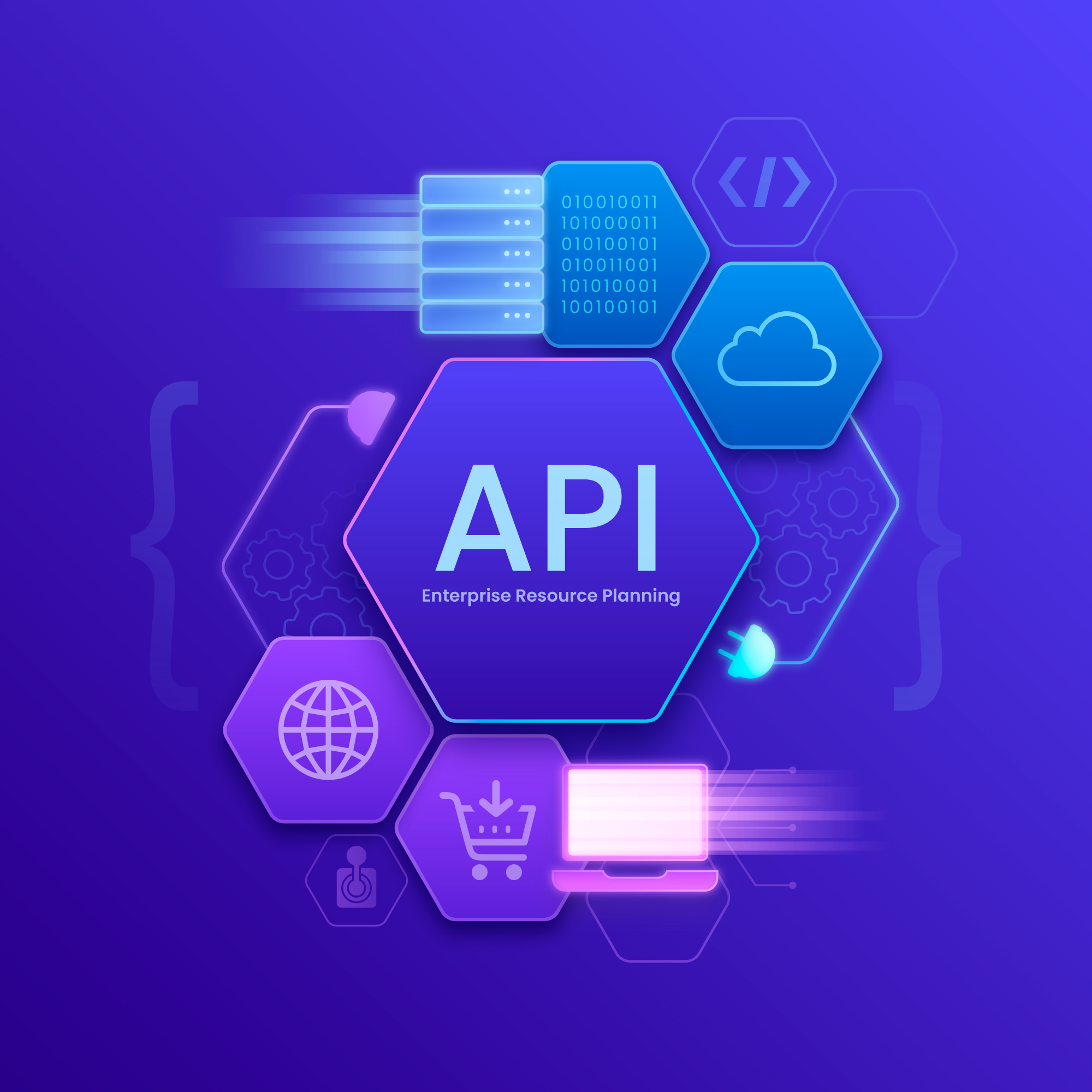
API-Led Connectivity: Best Practices from Real MuleSoft Projects
APIs are now the wiring of modern digital businesses. Industry surveys consistently show that the majority of enterprises rank API integration as a top strategic priority for digital transformation—driving faster product delivery, partner enablement, and data-driven services. Yet many organizations still struggle with brittle, point-to-point integrations that slow innovation and create operational risk.
API-led connectivity reframes integration as a purposeful, layered set of APIs that expose systems and composition logic as reusable building blocks. When implemented correctly on platforms such as MuleSoft’s Anypoint Platform, the result is repeatable integration patterns, stronger security posture, and dramatically shorter delivery cycles for new digital experiences.
This article dives deep into practical, technical guidance drawn from multiple real MuleSoft implementations delivered by Sama Integrations. You’ll find concrete case studies across retail, financial services, healthcare, and manufacturing, and detailed best practices that cover API design, security, performance, governance, testing, and deployment. Where relevant we show MuleSoft-specific approaches (Anypoint API Manager, DataWeave, Anypoint Exchange, CloudHub/Runtime Fabric), and generalize patterns that are platform-agnostic.
If you’re evaluating an API program or preparing a migration from legacy point-to-point integrations, the guidance here will help you architect a resilient, observable, and scalable API landscape. For hands-on help implementing these ideas, see Sama Integrations’ main site for our integration expertise: Sama Integrations.
Understanding the API-Led Connectivity Framework
API-led connectivity is a design and delivery methodology that organizes APIs into three logical layers. Each layer has specific responsibilities, SLAs, and consumers:
The Three Layers
System APIs
- Purpose: Provide a stable, secure, and governed façade to underlying systems of record (ERP, CRM, legacy mainframes, databases, third-party SaaS).
- Characteristics: Narrow scope, change infrequently, implement system-specific authentication and adapter logic.
- Technical concerns: connector configuration, pagination, schema normalization, connector retries, idempotency.
Process APIs
- Purpose: Encapsulate business logic and orchestration—combine data from multiple System APIs, apply business rules, and expose curated services for reuse.
- Characteristics: Translate between system models, apply transformation (DataWeave), coordinate synchronous and asynchronous flows, enforce transactional boundaries where appropriate.
Experience APIs
- Purpose: Shape data and interactions for specific consumers—mobile apps, single-page web apps, third-party partners, or B2B endpoints.
- Characteristics: Tailored payloads, presentation-specific caching, API throttling tuned per consumer, and support for channel-specific authentication.
Why This Matters Technically
- Separation of concerns: Changes to UI/UX can be isolated to Experience APIs, while System APIs shield the rest of the stack from backend changes.
- Reusability: Process APIs expose domain workflows (e.g., order orchestration) that multiple experiences can reuse, reducing duplicated logic.
- Resilience & Scalability: Clear boundaries enable independent scaling and targeted caching strategies per layer.
Comparison with Point-to-Point
Point-to-point integration results in tight coupling and ad-hoc transformations implemented inside many disparate clients or middleware flows. API-led connectivity enforces contract-first, discoverable, and governed interfaces—improving testability, observability (request tracing and correlation IDs), and the ability to adopt CI/CD for integration artifacts.
Ready to Maximize Efficiency with MuleSoft’s API-Led Connectivity?
Unlock seamless integration and future-proof workflows with API-led best practices from MuleSoft. At Sama Integrations, our experts help you harness modular, reusable APIs, robust governance, and secure, scalable architecture to connect your enterprise. Start transforming your digital operations with proven strategies—reach out today!
Real-World Implementation Insights
Below are four condensed case studies drawn from implementations we executed at Sama Integrations. Each highlights the business problem, the API-led architecture we applied, technical tradeoffs, and measurable outcomes.
Retail / E-commerce — Omnichannel Order & Inventory Fabric
Business challenge
A multinational retailer had inconsistent inventory visibility across e-commerce, mobile, and brick-and-mortar channels. Inventory sync relied on nightly batch jobs and direct integrations to multiple regional ERPs, causing “out of stock” errors and lost sales.
API-led solution architecture (technical)
- System APIs for each ERP and warehouse management system (WMS) that normalized inventory models, implemented pagination and CDC (change data capture) where supported, and surfaced consistent resource URIs (e.g., GET /systems/wms/v1/inventory/{sku}).
- Process APIs that implemented real-time inventory aggregation and business rules (reserve-on-add-to-cart, global stock thresholds). These used event-driven queues (e.g., JMS or Anypoint MQ) for asynchronous inventory updates and idempotent consumers for replay safety.
- Experience APIs that exposed SKU-level availability and fulfillment options to mobile/web (supporting partial responses, pagination and HATEOAS links for navigation).
Key implementation decisions
- Synchronous vs asynchronous: Reads for availability remained synchronous with short cache TTLs; updates (stock adjustments) were made event-driven to avoid blocking UI threads.
- Data transformation: Heavy DataWeave transformations at Process API level to combine normalized inventory with promotions and geo-routing logic.
- Caching: CDN layer + API gateway caching for high-read traffic Experience APIs; object store for transient reservations.
- Resilience: Circuit breaker patterns and graceful degradation to show “limited stock” rather than failing UX.
Measurable outcomes
- New channel rollout time reduced by ~65% (from 8–10 weeks to 2–3 weeks).
- “Out of stock” related order failures dropped by 40%.
- Peak load handled with 3× fewer backend calls due to caching and aggregation.
Lessons learned
- Standardize SKU and inventory models early—mapping costs are high if pushed late.
- Use idempotent message handling for IoT or WMS updates to avoid double reservations.
Financial Services — Loan Origination & Underwriting Automation
Business challenge
A regional bank wanted to reduce manual interventions in loan origination. Data lived across credit bureaus, legacy core banking systems, and multiple third-party verification providers.
API-led solution architecture (technical)
- System APIs to core banking, document vaults, credit bureau connectors, and identity providers. These implemented strict throttling and credentials per provider.
- Process APIs implemented orchestration for underwriting: customer initiation → automated eligibility checks → risk scoring microservice → human review queue if anomalies detected. Decision logic was expressed as a composable set of rules using an external rules engine (e.g., decision service) called from Process APIs.
- Experience APIs for customer portals and loan officer dashboards; included differential payloads: full audit trail for officers, redacted view for customers.
Key implementation decisions
- Security & Compliance: Mutual TLS between bank on-premise systems and Mule runtime for high-assurance connections; JWTs with signed claims for internal service calls.
- Idempotency & Transactions: Where cross-system updates were required (funding flows), we used saga/compensation patterns to ensure eventual consistency rather than distributed transactions.
- Testing: Heavy use of MUnit for Mule flows, plus contract testing (consumer-driven) for Process APIs to prevent breaking downstream consumers.
Measurable outcomes
- End-to-end manual steps reduced by 75%; automated approvals processed within minutes for standard cases.
- Operational cost per loan decreased by ~35%.
Lessons learned
- Define clear audit and retention policies at design time—regulatory reporting surfaces early otherwise require costly rework.
- Use feature flags to safely roll out new decisioning rules.
Healthcare — Federated Patient Record Access (HIPAA-aligned)
Business challenge
A healthcare network needed a unified patient view across multiple EHRs and lab systems while preserving strict PHI handling, auditability, and consent management.
API-led solution architecture (technical)
- System APIs abstracted each EHR vendor and lab connector; connectors implemented field-level encryption and token-based access with short TTLs.
- Process APIs combined clinical notes, lab results, and scheduled appointments into normalized FHIR-like resources (where feasible), while enforcing consent checks and dynamic scoping.
- Experience APIs provided physician dashboards and patient portals with role-based payloads; mobile apps used lightweight DTOs with minimized PHI.
Key implementation decisions
- Standards: Adopted FHIR patterns where possible. Converted proprietary schemas to intermediate canonical models for Process APIs to simplify downstream transformations.
- Security: Fine-grained scopes and token introspection endpoints for session validation; strong logging and tamper-evident audit trails.
- Latency vs accuracy: For critical care, Process APIs streamed updates and used near-real-time subscriptions (webhooks) rather than polling.
Measurable outcomes
- Duplicate diagnostic tests reduced by 22% within the first year.
- Clinician time saved approximated at 10 minutes per patient encounter via consolidated views.
Lessons learned
- Consent management requires immutable audit logs and deterministic consent checks embedded in the Process layer.
- Data harmonization is a multi-phase effort—start with canonical patient identifiers.
Manufacturing — IoT Telemetry & Predictive Maintenance
Business challenge
A manufacturer required reliable ingestion and analysis of high-volume IoT telemetry for predictive maintenance and KPI dashboards.
API-led solution architecture (technical)
- System APIs ingested device telemetry using lightweight protocols (MQTT/AMQP) and offered normalized telemetry events through streaming endpoints.
- Process APIs performed enrichment (asset context, thresholds), windowed aggregation for time-series analytics, and forwarded normalized events to predictive models running in a data platform.
- Experience APIs powered field engineer mobile apps and supervisory dashboards showing alerts, maintenance tickets, and recommended actions.
Key implementation decisions
- Event architecture: Chose event streaming for high-volume sensor data and retained REST APIs for control plane operations.
- Backpressure & batching: Implemented batching gateways and flow control to protect downstream analytics.
- Edge processing: Offloaded aggregation/threshold checks to edge nodes to reduce central processing footprint.
Measurable outcomes
- Unplanned downtime reduced by ~30%; annualized savings in the millions USD due to fewer emergency repairs.
- Mean time to detect (MTTD) reduced from hours to minutes.
Lessons learned
- Implement strict schema evolution policies for telemetry messages to avoid consumer breakage.
- Use compaction and TTL strategies to manage time-series storage costs.
Ready to Maximize Efficiency with MuleSoft’s API-Led Connectivity?
Unlock seamless integration and future-proof workflows with API-led best practices from MuleSoft. At Sama Integrations, our experts help you harness modular, reusable APIs, robust governance, and secure, scalable architecture to connect your enterprise. Start transforming your digital operations with proven strategies—reach out today!
Essential Best Practices
This section dives into actionable, technical best practices across design, security, performance, and governance.
Design Principles (API-First, Contracts, Naming, Versioning)
API-first and contract-driven development
- Start with OpenAPI (OAS) or RAML contracts that define request/response schemas, error models, and examples. Share these contracts in a central catalog (e.g., Anypoint Exchange) for design validation and consumer feedback.
- Use contract stubs to allow parallel development: front-end teams consume stubs while System APIs are implemented.
Consistency and canonical models
- Define canonical domain models for entities (e.g., Customer, Order, Asset) mapped in Process APIs. Keep system-specific fields confined to System APIs.
- Standardize common patterns: pagination (page, size, cursor), filtering conventions, and date/time formats (ISO 8601).
Versioning strategy
- Semantic versioning: use MAJOR.MINOR.PATCH; breaking changes increment MAJOR and are accompanied by deprecation windows.
- Support side-by-side deployment: retain v1 endpoints until clients migrate to v2; use API Manager policies to route or proxy for transitional behavior.
Sample minimal OpenAPI fragment
openapi: 3.0.1
info:
title: Orders Process API
version: 1.0.0
paths:
/orders/{orderId}:
get:
summary: Retrieve an order
parameters:
– name: orderId
in: path
required: true
schema:
type: string
responses:
‘200’:
description: Order found
content:
application/json:
schema:
$ref: ‘#/components/schemas/Order’
components:
schemas:
Order:
type: object
properties:
id: { type: string }
status: { type: string }
items:
type: array
items: { $ref: ‘#/components/schemas/OrderItem’ }
Contract testing
- Implement consumer-driven contract tests to ensure Process APIs don’t break Experience consumers. Tools such as Pact can be used alongside MUnit for Mule flows.
Security Implementation (Auth, Tokens, Policies)
Authentication & Authorization
Use OAuth 2.0 for client authorization with appropriate grant types:
- Authorization Code for user-facing clients (with PKCE for mobile).
- Client Credentials for machine-to-machine service calls.
Use JWTs for short-lived tokens; implement token introspection for sensitive scopes.
Apply least privilege: define fine-grained scopes aligned to API capabilities.
Mutual TLS & network security
- Where high assurance is required (financial/healthcare), use mutual TLS (mTLS) between runtimes and upstream systems; combine mTLS with API gateway policies for IP whitelisting.
Secrets & key management
- Avoid storing secrets in source control or plain properties files. Use secret stores (HashiCorp Vault, Anypoint Secrets Manager) and rotate keys regularly.
- Use HSM/KMS for signing keys where regulatory controls demand hardware-backed protection.
Policies & threat protection
- Enforce policies at API gateway: rate limits, spike arrests, CORS, input size restrictions, JSON/XML threat protection, IP blacklisting, and OAuth enforcement.
- Sanitize inputs and validate schemas early to avoid injection attacks.
Data protection
- Encrypt sensitive fields at rest and in transit (TLS1.2+). For selective masking, perform field redaction in Process APIs and ensure logs do not contain unredacted PHI/PII.
Performance Optimization (Caching, Scaling, DataWeave)
Caching strategies
- Edge caching: CDN for Experience API GET responses that can be cached.
- Gateway caching: API Manager cache for aggregated responses, with cache keys that include relevant query params and auth scopes.
- Runtime caching: Object Store or in-memory caches for short-lived session/state.
Backpressure and flow control
- Adopt non-blocking connectors where possible; use streaming for large payloads and avoid materializing entire messages into memory.
- Use MQ/streaming between System and Process APIs to decouple spikes and apply backpressure.
DataWeave performance
- Prefer streaming transformations for large payloads (read with streaming mode). Avoid excessive use of nested map/filter that creates intermediate large lists.
- Cache static reference data (lookup tables) at runtime to avoid repeated DB calls during transformations.
Connection management
- Configure connection pooling for databases and external systems; tune pool sizes based on producer/consumer ratios and expected concurrency.
- Use bulk endpoints where supported by upstream systems to reduce per-request overhead.
Observability & monitoring
- Capture metrics: latency percentiles (p50/p95/p99), throughput (TPS), error rates, and resource usage (heap, threads).
- Implement distributed tracing: propagate correlation IDs across System→Process→Experience flows and forward traces to APM (Zipkin/Jaeger/New Relic).
Load testing
- Perform performance tests with realistic traffic shapes (burst + steady) using tools like JMeter or Gatling. Test the entire integration surface, not only the Mule flows.
Governance & Lifecycle Management (Discovery, CI/CD, Testing)
API discovery and catalog
- Maintain a central API catalog (Anypoint Exchange) with searchable metadata, usage examples, security posture, and SLA info. Use tags and domain taxonomies to assist discovery.
Governance model
- Create an API governance board with product owners, architects, security, and operations to review standards, approve exceptions, and oversee deprecation timelines.
Testing across lifecycle
- Unit testing: MUnit tests for flows and components.
- Integration testing: End-to-end tests against sandboxed systems and contract tests for Process APIs.
- Performance testing: Baseline CPU/memory and throughput expectations; include chaos testing for resilience.
CI/CD & automation
- Use Mule Maven plugin, Anypoint CLI, and pipeline tools (Jenkins/GitHub Actions/GitLab) for automated builds, artifact signing, and promotion across environments.
- Use infrastructure-as-code (Terraform or CloudFormation) to provision CloudHub or Runtime Fabric infra declaratively.
- Adopt blue/green or canary deployments for zero-downtime releases; automate rollbacks on error thresholds.
Operational runbooks
- Publish runbooks that describe escalation paths, common remediation steps, and rollback plans. Pair runbooks with automated health checks and self-healing scripts where safe.
Managed operations
- For long-term stability, many organizations partner with managed integration teams for 24×7 support and SLA management. See Sama Integrations’ managed integration services for operational handoff and continuous optimization.
Ready to Maximize Efficiency with MuleSoft’s API-Led Connectivity?
Unlock seamless integration and future-proof workflows with API-led best practices from MuleSoft. At Sama Integrations, our experts help you harness modular, reusable APIs, robust governance, and secure, scalable architecture to connect your enterprise. Start transforming your digital operations with proven strategies—reach out today!
Common Pitfalls and How to Avoid Them
Even seasoned teams fall into recurring traps—here’s how to identify and mitigate them.
Over-engineering
- Pitfall: Building extra API layers “just in case” introduces latency and maintenance overhead.
- Avoidance: Validate layer necessity against explicit reuse scenarios. Start with a minimal System→Process→Experience implementation and expand intentionally.
Insufficient Error Handling & Observability
- Pitfall: Poor structured logging and missing correlation makes troubleshooting slow.
- Avoidance: Standardize log formats (JSON), propagate correlation IDs, capture contextual metadata (user, tenant, requestId), and forward logs to central analytics.
Poor Naming & Inconsistent Patterns
- Pitfall: Non-standard resources reduce discoverability.
- Avoidance: Create an API style guide (endpoints, verbs, status codes, error payloads). Lint OpenAPI/RAML specs during PRs.
Breaking Backwards Compatibility
- Pitfall: Pushing breaking changes without clear migration.
- Avoidance: Semantic versioning, deprecation headers, and migration support with adapters/compatibility layers.
Neglecting Security & Compliance Early
- Pitfall: Deferring security leads to rework and audit failures.
- Avoidance: Perform security/privacy threat modeling at design phase and bake in automated policy checks in CI.
Inadequate Testing
- Pitfall: Only happy-path testing misses integration edge cases.
- Avoidance: Expand test suites to include negative tests, timeout/failure simulations, and contract tests across teams.
Future-Proofing Your API Strategy
To keep API investments durable, design for change and emergent paradigms:
Align with Microservices & Service Mesh
- APIs should enable microservice boundaries and enable service mesh observability (mTLS between services, sidecar telemetry) as teams mature.
Embrace Event-Driven & Async Patterns
- Incorporate event streams and publish/subscribe topics alongside RESTful APIs to support reactive UIs and real-time analytics. Use AsyncAPI to define event contracts for telemetry and domain events.
Explore GraphQL & Query Optimization
- For complex client query needs, consider a GraphQL façade backed by Process APIs that shape and resolve fields from multiple systems—this offloads query complexity from clients while maintaining backend governance.
Cloud-Native & Edge Considerations
- Adopt containerized runtimes (Runtime Fabric, Kubernetes) to enable autoscaling, multi-cloud portability, and better cost optimization. Consider edge compute for ultra-low latency Experience APIs.
Monetization & Ecosystem Models
- As APIs mature, evaluate partner programs and monetization models. Implement usage metering, developer portals, and SLA tiers. Build API productization processes for partner onboarding.
Ready to Maximize Efficiency with MuleSoft’s API-Led Connectivity?
Unlock seamless integration and future-proof workflows with API-led best practices from MuleSoft. At Sama Integrations, our experts help you harness modular, reusable APIs, robust governance, and secure, scalable architecture to connect your enterprise. Start transforming your digital operations with proven strategies—reach out today!
Conclusion & Recommended Next Steps
API-led connectivity is a discipline as much as a technical pattern. It requires thoughtful design, rigorous governance, and operational maturity to deliver predictable business value. From the case studies above you can see recurring themes:
- Standardize and automate early (design contracts, CI/CD, tests).
- Separate concerns across System / Process / Experience to enable reuse and agility.
- Prioritize security, observability, and performance at every layer.
- Adopt event-driven patterns where real-time and scale are required.
If you’re ready to move from point-to-point spaghetti to an API-driven integration fabric, consider these next steps:
- Run a discovery & assessment — catalogue systems, define canonical models and identify quick wins. Our strategic assessment and architecture services can help you prioritize a roadmap. (See Sama Integrations’ Consulting services.)
- Define core contracts — produce OpenAPI/RAML contracts for top-value System and Process APIs and publish them to a catalog for feedback. For bespoke API implementations, rely on specialized engineering teams. (See Sama Integrations’ custom development services.)
- Set up governance and CI/CD — introduce an API governance board, testing automation, and environment promotion pipelines. For long-term operations, evaluate managed and support options. (Explore our managed integration and support and troubleshooting services.)
At Sama Integrations we specialize in designing, building, and operating MuleSoft-based integration platforms—delivering API-first architecture, hardened security, and production-grade observability. If you want a pragmatic roadmap, targeted pilot implementation, or ongoing managed operations, consider reaching out to begin a technical assessment.
Ready to get technical? Start with a hands-on discovery session to map your top three integration pain points and proof-of-value APIs. Learn more about our services: Custom development solutions for API projects, Integration strategy and consulting, Managed integration operations, and Support & troubleshooting.
Appendix: Tactical Checklists & Quick References
API Design Quick Checklist
- Define contract (OpenAPI/RAML) before implementation.
- Specify error model and standard error codes.
- Design for idempotency on write operations (idempotency keys).
- Use pagination and filtering conventions.
- Publish example payloads for each response.
Security Quick Checklist
- Use OAuth2 + JWT for service and user flows.
- Enforce mTLS for high-assurance channels.
- Rotate keys and use secret manager.
- Enforce gateway policies (rate limits, IP controls, input validation).
Testing & Deployment Quick Checklist
- MUnit unit tests for flows.
- Contract tests for Process/Experience APIs.
- Performance tests simulating peak traffic.
- CI/CD promotion with automated smoke tests.
- Canary or blue/green strategies for production changes.




